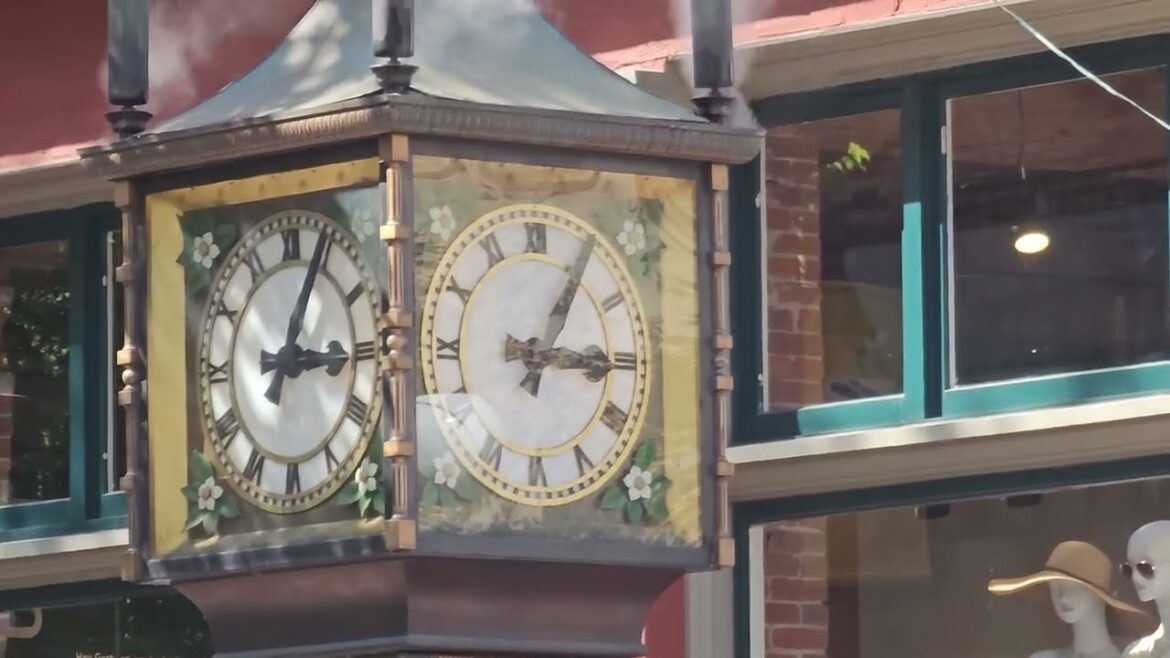Gastown is a national historic site in Vancouver, situated at the northeast end of Downtown, adjacent to the Downtown Eastside. Gastown was Vancouver’s first downtown core and is named after “Gassy” Jack Deighton, a Geordie seaman, steamboat captain and barkeeper who arrived in 1867 to open the area’s first saloon.
In 1886, the town was incorporated as the City of Vancouver. It fell victim to the Great Vancouver Fire in the same year, which destroyed all but two of its buildings. The area was completely rebuilt and continued to thrive.
Gastown found new life as the centre of the city’s wholesale produce distribution until the Great Depression in the 1930s. After the Depression, Gastown was a largely forgotten neighbourhood of the larger city of Vancouver, and fell into decline and disrepair until the 1960s.
Vancouver’s citizens became concerned with preserving Gastown’s distinctive and historic architecture. Campaigning resulted in the provincial government declaring Gastown a provincial historical site in 1971, protecting its heritage buildings forever, and the Canadian government designated it a national historic site in 2009.
Gastown’s most famous landmark is its steam-powered clock, located on the corner of Cambie and Water Street. The clock was built to cover a steam grate that was part of Vancouver’s distributed steam-heating system. The clock was built as a way to harness the steam and to prevent street people from sleeping on the spot in cold weather.
A plant adjacent to the Georgia Viaduct generates the low-pressure steam that powers a miniature steam engine in the base of the clock, which drives a chain lift that moves steel balls upward, where they are unloaded and roll to a descending chain. The weight of the balls on the descending chain drives a conventional pendulum clock escapement, geared to the hands on the four faces. The steam also powers the clock’s sound production, which uses whistles to to signal the time and produce the Westminster chime. Each 1/4 hour the clock sounds the chimes on 5 brass steam whistlers.
A steam clock is a clock that is fully or partially powered by a steam engine. Only a few functioning steam clocks exist, most designed and built by Canadian horologist Raymond Saunders for display in urban public spaces. Steam clocks built by Saunders are located in Otaru, Japan; Indianapolis, United States; and the Canadian cities of Vancouver, Whistler, and Port Coquitlam, all in British Columbia. Steam clocks by other makers are installed in St Helier, Jersey, and at the Chelsea Farmers’ Market in London, England.
Although they are often styled to appear as 19th-century antiques, steam clocks are a more recent phenomenon inspired by the Gastown steam clock built by Saunders in 1977. One exception is the steam clock built in the 19th century by Birmingham engineer John Inshaw to demonstrate the versatility of steam power.
In 1859, the engineer and businessman John Inshaw took over the public house on the corner of Morville Street and Sherborne Street in Ladywood, Birmingham, UK. In a bid to make the establishment a talking point in the area, as well as furnishing it with various working models, Inshaw applied his interest in steam power to construct a steam-powered clock as a feature A small boiler made steam; the steam condensed into droplets of water that fell on a plate at regular intervals, and the plate then drove the mechanism. The clock was installed above the door, and the pub became known as the Steam Clock Tavern. The establishment was sufficiently successful that it became a music hall in the 1880s.

